Renata Boero (Genoa, 1936) returns to Macerata, in a symbolic return to the roots of an artistic journey that, since the late 1960s, has made her a point of reference for contemporary art. In fact, the Civic Museums of Palazzo Buonaccorsi are hosting, from June 4 to November 9, 2025, the exhibition Renata Boero. Teleri, curated by Vittoria Coen and Giuliana Pascucci, promoted by the City of Macerata in collaboration with the Academy of Fine Arts, the University of Macerata and under the patronage of the Province of Macerata and the Marche Cultura Foundation.
The exhibition, one of the most eagerly awaited on the 2025 Marche cultural calendar, features a wide selection of monumental works created between the mid-1970s and the early 2000s. A review that recounts, through the medium of the canvas- or rather, of the telero, as the title states - the evolution of a painting that does not limit itself to representing nature, but incorporates it, assimilates it, and transforms it into a visual narrative, into memory and spirituality.
“A new exhibition that, in the authoritative setting of the Civic Museums of Palazzo Buonaccorsi, continues along the path of promoting and enhancing contemporary art in connection with national and international circuits,” says Mayor Sandro Parcaroli. “This year, for the first time together, the Academy of Fine Arts, the Municipality and the University of Macerata join forces to give life to a shared exhibition-cultural project that interweaves art, education and territory. Inaugurating this fruitful collaboration between institutions is the exhibition dedicated to Renata Boero, an internationally renowned artist whose work - deep, rooted and poetic - represents one of the most original experiences in Italian contemporary art.”
“This exhibition, the result of a shared commitment to promote culture and create spaces for dialogue between knowledge,” says John McCourt, rector of the University of Macerata, “will allow our student community to get closer to Boero’s works, which cross time and space, overcome cultural barriers, and solicit imagination and capacity for wonder. Integrating art into educational pathways means stimulating in young people the ability to interpret, to feel, to develop critical thinking and to create new and deep connections, in that inter- and transdisciplinary perspective proper to the University of Macerata and the Giacomo Leopardi School of Advanced Studies.”
“Renata Boero’s presence at Palazzo Buonaccorsi is an important opportunity to seal the collaboration between the Academy of Fine Arts, the Municipality of Macerata, and the University, and we are delighted that the artist has accepted our invitation to hold a solo exhibition of her work,” says Piergiorgio Capparucci, director of the Macerata Academy of Fine Arts. “The historical path of a career that began during the 1960s and that, today, more than ever, confirms her as a nationally and internationally recognized artist, highlights her strength and poetic coherence. The commitment that the Institutions, jointly, have made, in order to arrive at this result, is aimed primarily at the city of Macerata and the territory of the Marche, with the hope that it will continue over time, a fruitful collaboration, made up of appointments and events that show the lively attention to culture in its different declinations, as well as the enhancement of excellence. For the Academy of Fine Arts, the training of students, in particular, also passes through the demonstration of the openings that affect the study, and which allow them to deal concretely with various professional realities seen with a broad view. Special thanks to Prof. Vittoria Coen and Dr. Giuliana Pascucci, curators of the exhibition.”
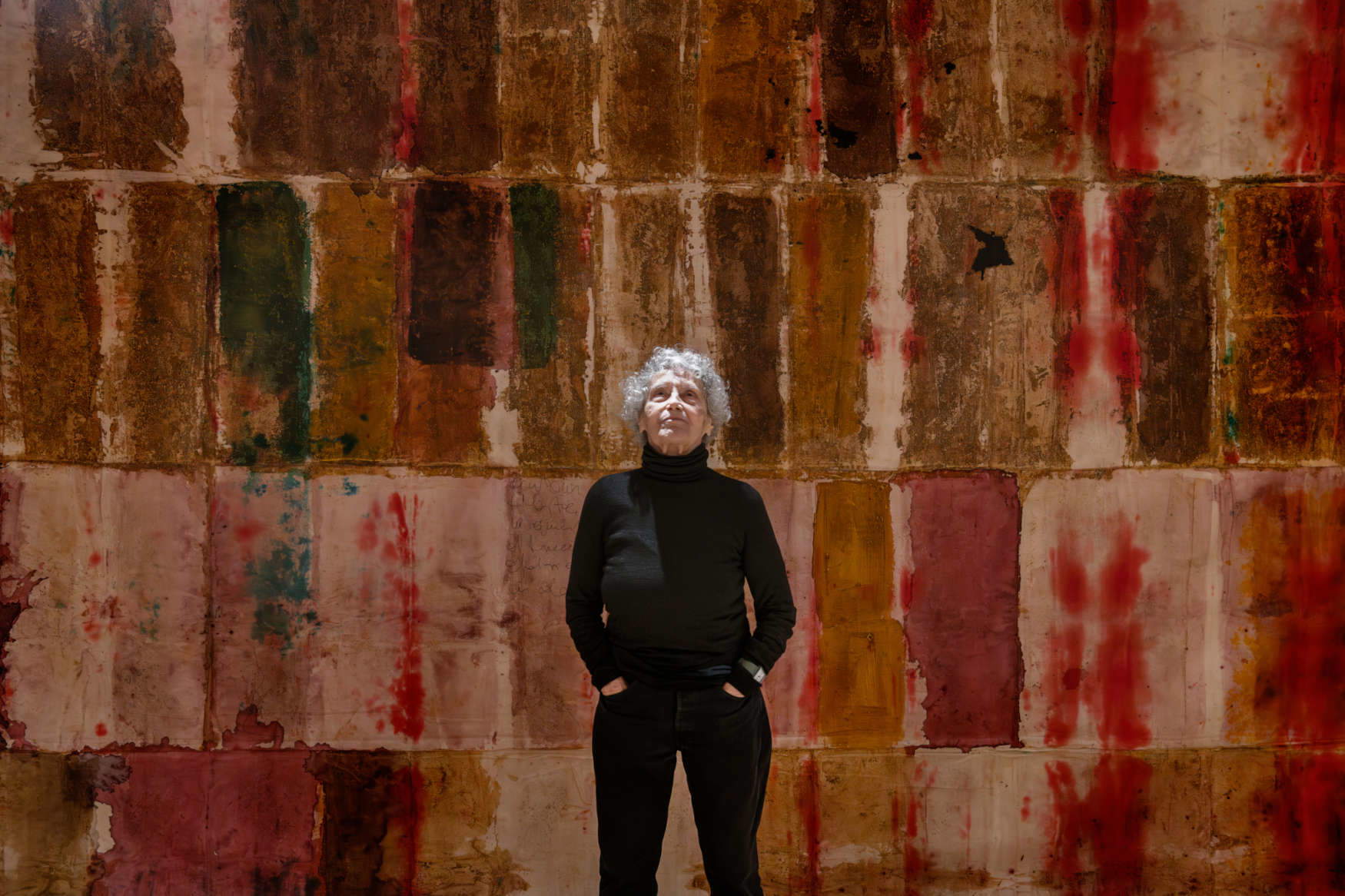
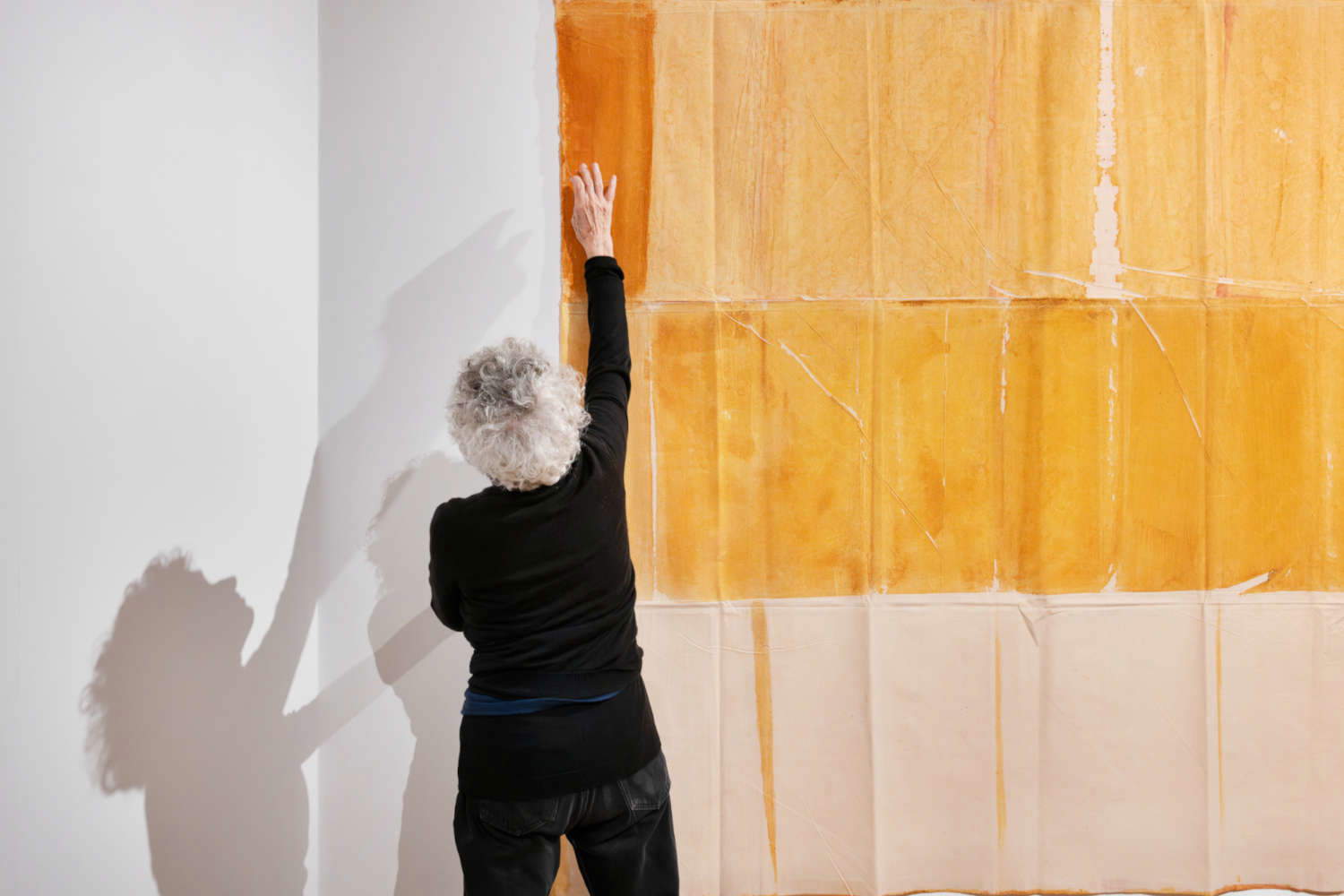
The nucleus of the exhibition revolves around a series of large canvases that highlight the distinctive feature of Boero’s research: the use of natural pigments-obtained from soils, roots, herbs, tubers-treated through ancient processes of boiling and immersion, soaking onto the canvas that absorbs the color. The result is an organic painting, where the color is not spread, but absorbed, digested by the raw canvas, which becomes both body and archive of the process.
In the Chromograms, for example, the visual narrative is built on naturally generated rhythms and marks, in an interweaving of color bands that reflect the layering of time. Chromogram Yellow (1970-1975) is articulated in four horizontal bands of irregular rectangles, in which the hues vary from bright yellows to darker, deeper shades, evoking a slow process of sedimentation of matter and memory. A similar scanning of spaces is found in Chromogram (1975-1980) in which a grid punctuated by bands of dark, intense colors are crossed by shades of green, red and yellow. The pigments, often absorbed into the fabric or applied more transparently, allow the grain of the canvas and traces of time to emerge. In Chromogram Earth (1980-1990), on the other hand, the pigmentations become warmer and more textural, with the surface of the canvas returning the suggestion of a living earth, subject to oxidation and transformation, like a body in constant mutation.
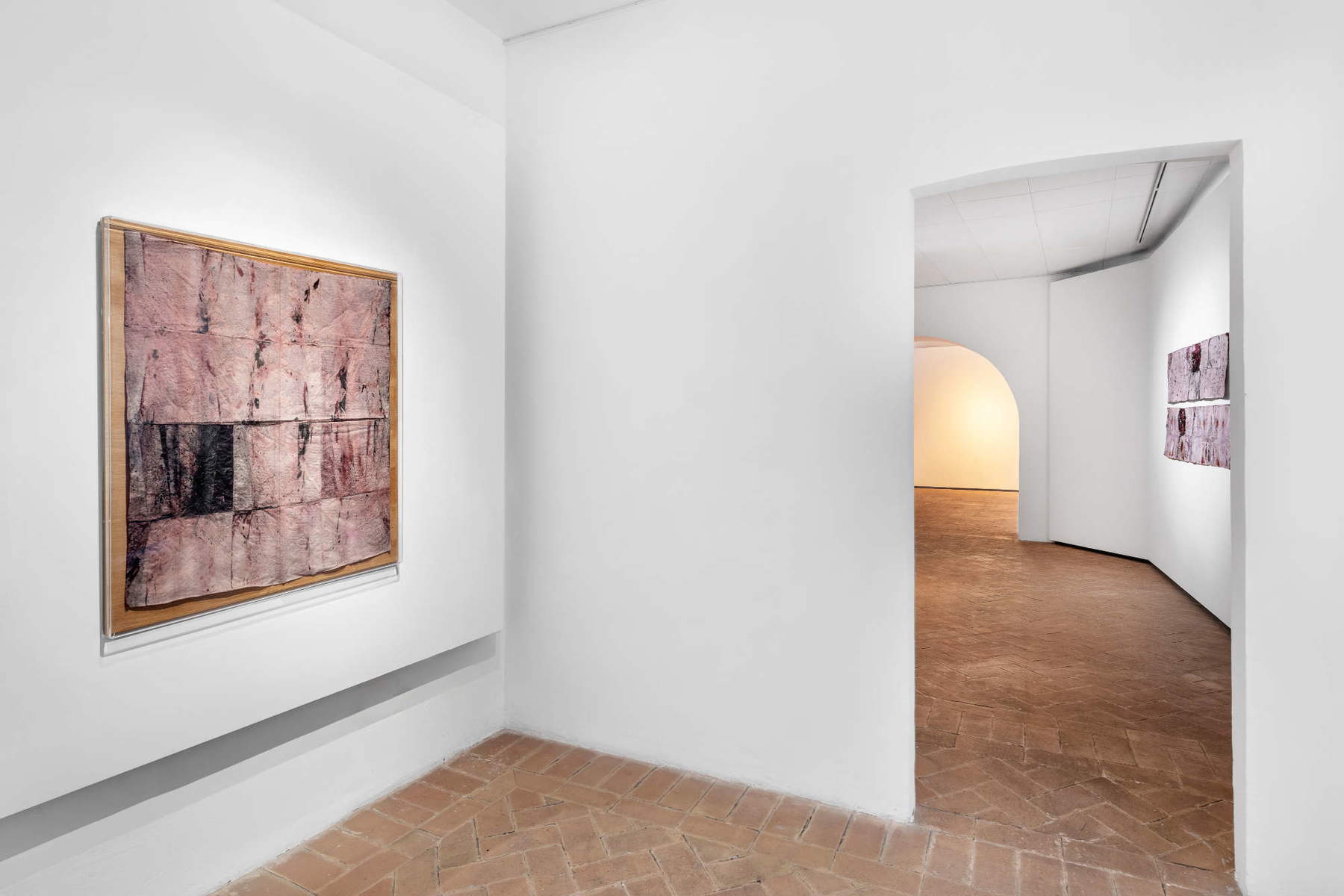
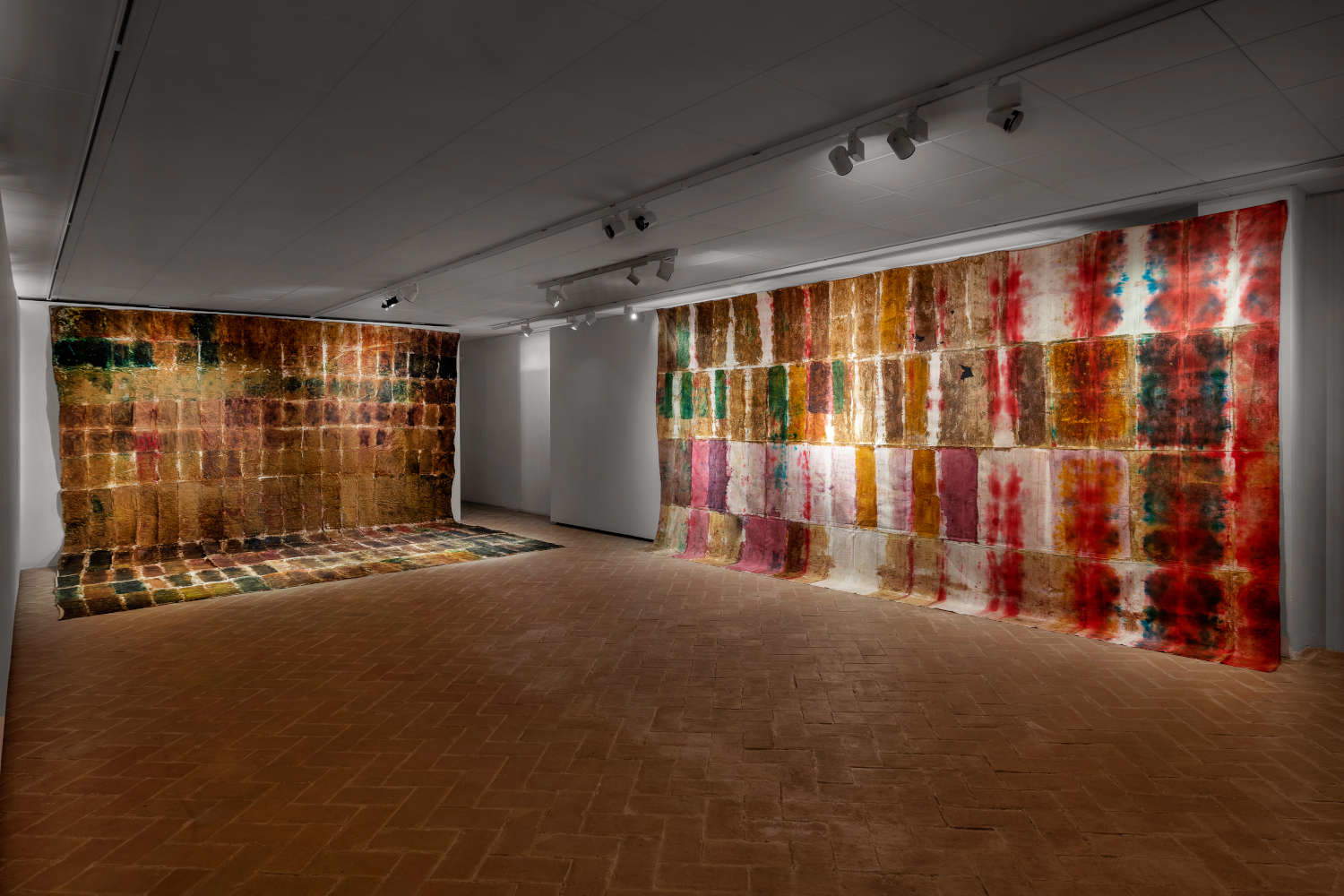
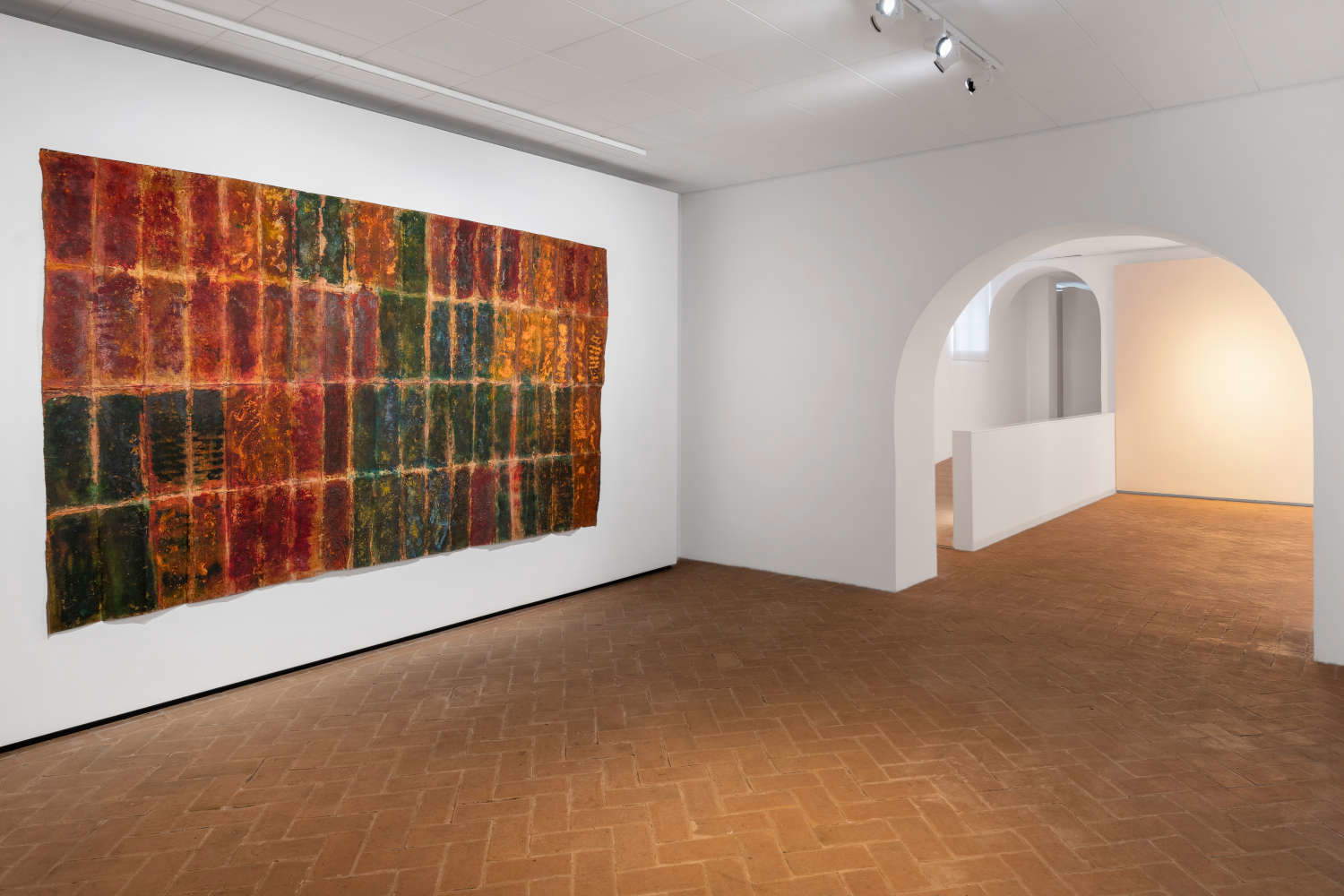
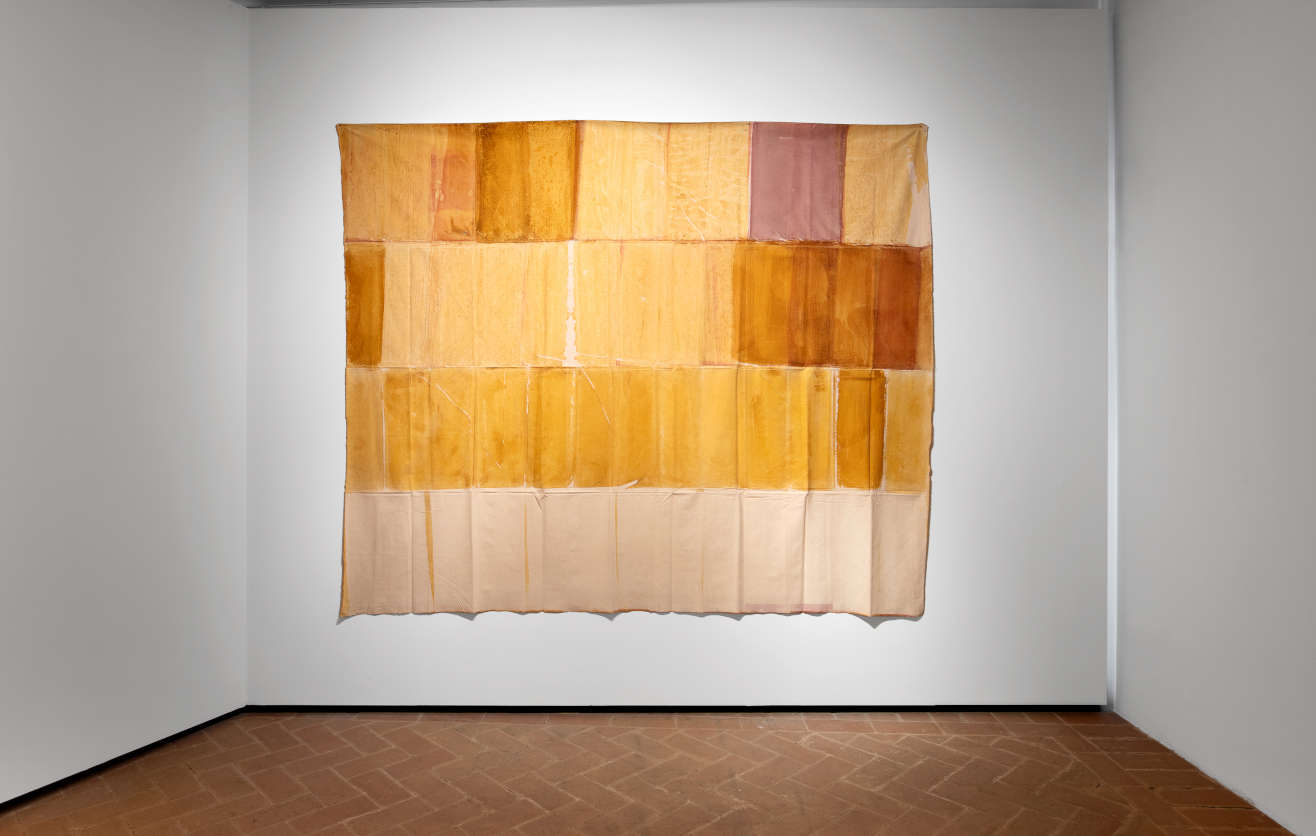
For Renata Boero, nature is much more than a subject: it is an accomplice, an instrument, the very essence of the creative act. As the artist states, “the natural elements have come to me,” in a symbiotic relationship in which the artist does not impose the form, but goes along with it, listens to it, transcribes it. From this emerges works such as Ctò-nio-grafia Landscape in Pink (2000s), where the delicacy of rosy hues is interwoven with dark textures and folds that seem to hold time, or the diptych Ctò-nio-grafia from the same years, in which the grid of rectangles gives way to earthy and purplish hues, with interventions of black and brown shaping dense and tactile surfaces.
The concept of art as a spiritual reconstruction of nature runs through all of Boer’s production. His canvases do not describe landscapes, but embody them. The canvas is a living organism; painting is a ritual gesture, an act of symbiosis that rejects representation in favor of a deep immersion in the real, understood not as phenomenological datum but as archetype.
Renata Boero’s art is a total poetic statement. Vittoria Coen, in the critical text accompanying the exhibition, emphasizes how Renata Boero’s art is “obsession with making, therefore, and makes the work penetrate nature and receive as much energy from it, in an ideal fraternity, in an exchange, in which the sacredness and spirituality of the creative process itself testify to the will to protect the planet.” Time and space are suspended, redefined. Each work is a ritual, a moment of meditation and contemplation in which the work continues to live beyond the act of making. The life cycle of matter is renewed through the sign, the trace, the color that is reborn every time the canvas is looked at.
In the work Fioritura 1 (1990-2000), this idea manifests itself as an organic mosaic, where the color tiles evoke barks, flowers, sediment. The colors are intense, warm, vibrant, alternating with veins of blue and violet. The canvas, undulating and resting directly on the ground, seems to expand in space, accentuating the viewer’s sense of proximity and participation.
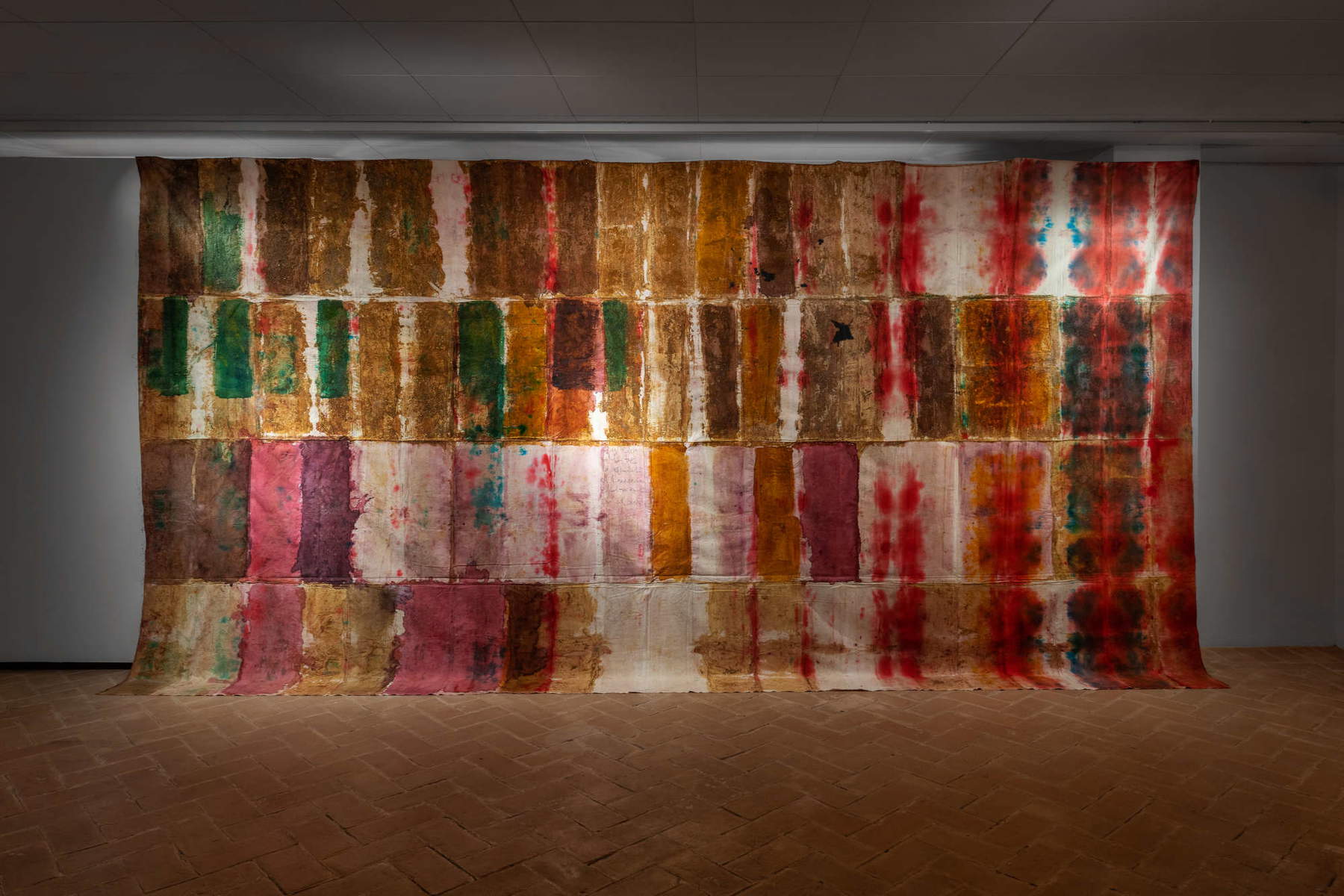
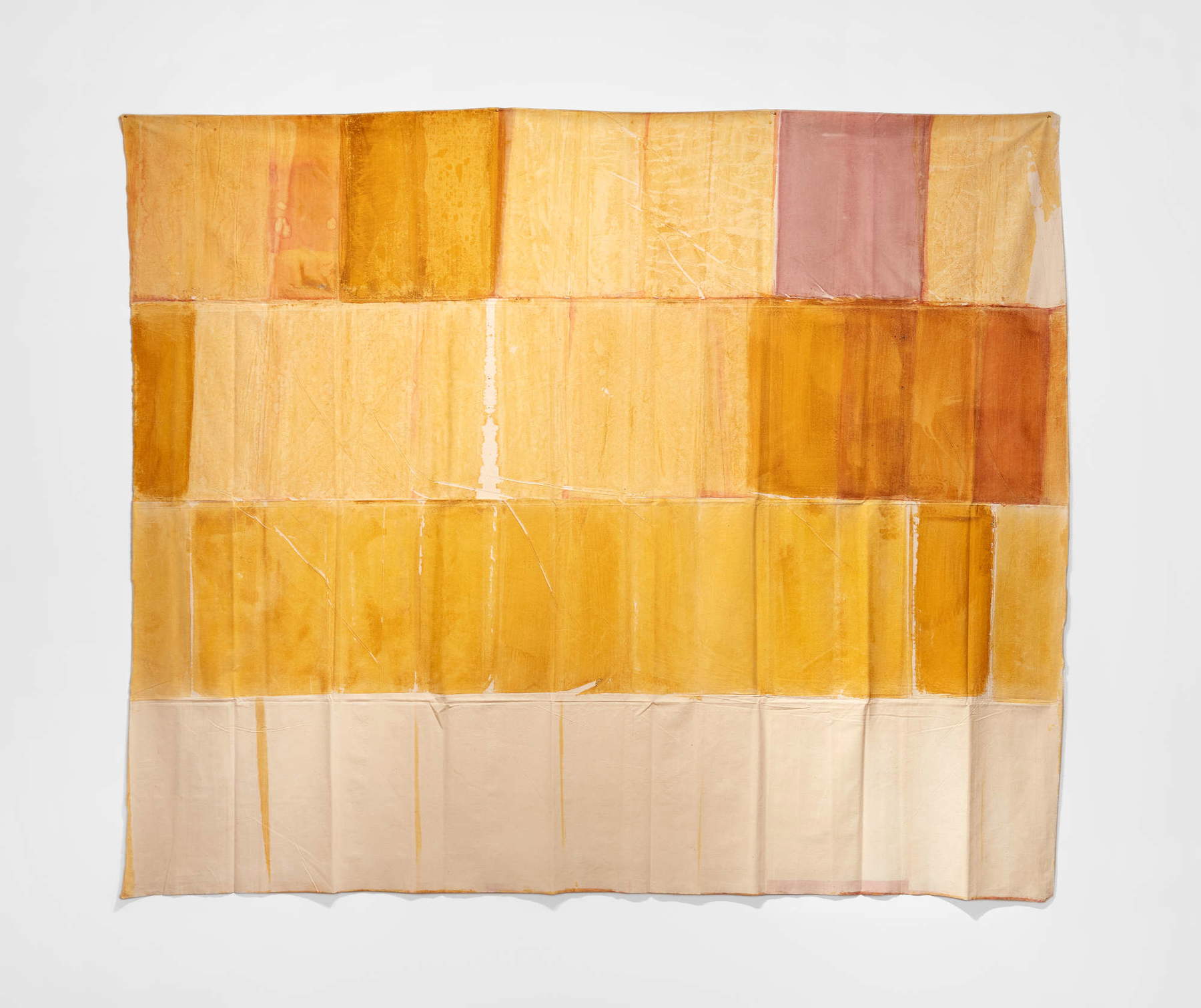
Renata Boero was born in Genoa in 1936 and from her earliest years moved between humanism and visual experimentation. A student of Emilio Scanavino at the Liceo Artistico, she made her debut at a very young age at the 1959 Quadriennale in Rome. In the 1960s she devoted herself to restoration under Caterina Marcenaro, an experience that refined her sensitivity to natural materials and organic processes.
In 1974 he inaugurated the Mirrors series, presenting a work at the ICC in Antwerp in 1978. But it was with the exhibition Ex radicibus (Macerata, 1977) that the artist made his poetics explicit: creating works from roots, from the earth, in an alchemy of art and nature. Since then, he has participated in five Venice Biennials (from 1982 to 2010), taught for more than 20 years at the Brera Academy, and carried out academic work in California and Argentina.
Major solo exhibitions include Musei Civici, Monza, 1988; Casa del Mantegna, Mantua, 1992; Museo Diocesano, Milan, 2014; Museo del Novecento, Milan, 2019. She has participated in the Biennale de la critique, Antwerp and Charleroi, 1979-1980; XVI São Paulo Biennial, Brazil, 1981; exhibitions at the National Gallery of Modern and Contemporary Art, Rome in 2021 and 2023. Renata Boero is fully included in the international art scene; her works are permanently present in important national and foreign museums.
To seal the educational and philosophical value of Boero’s work, the “Giacomo Leopardi” School of Advanced Studies chose the exhibition as the starting point for a School of Higher Education included in the “Educating Future Citizens” network, with the participation of the artist. A strong signal: art not only as an aesthetic creation, but as a tool for awareness and construction of critical thinking for future generations.
Closing the exhibition is a video documenting the artist’s gestures at work, as if to render the movement and rituality that animate each of his canvases. The catalog published by Sagep Editori, with texts by Coen, Giuliana Pascucci and Gianni Dessì, accompanies the exhibition, offering an in-depth and poetic reading of an artist who has made painting a ritual, a journey and a form of collective meditation.
The exhibition venue is Palazzo Buonaccorsi, an 18th-century Macerata jewel designed by Giovan Battista Contini. The venue, in the heart of the historic center, houses three permanent collections-Ancient Art, Modern Art, and the Carriage Museum-and spaces dedicated to temporary exhibitions. Boer’s exhibition fits into this context.
Hours: June, July, August, September: Tuesday to Sunday, 10 a.m. - 1 p.m. / 3 p.m. - 7 p.m. October: Tuesday to Sunday, 10 a.m. - 1 p.m. / 2:30 p.m. - 6:30 p.m. November: Tuesday to Sunday, 10 a.m. - 1 p.m. / 3 p.m. - 5:30 p.m. The ticket office closes 30 minutes before the indicated time.
The exhibition is included within the ticket to visit the Civic Museums of Palazzo Buonaccorsi. Full price ticket € 9.50; Reduced price ticket € 7.00: university students and Academy of Fine Arts, groups of minimum 15 people, FAI, Touring Club, COOP Alleanza 3.0, Italia Nostra members, residents in the municipality of Macerata; Reduced price ticket Schools € 5.00: reserved for schoolchildren from secondary schools in the municipality of Macerata. Free admission ICOM members, children up to 13 years old, journalists with regular membership card, Marche Region tour guides with regular membership card, disabled persons with accompanying person
 |
| Renata Boero, the alchemy of natural painting on display in Macerata |
Warning: the translation into English of the original Italian article was created using automatic tools. We undertake to review all articles, but we do not guarantee the total absence of inaccuracies in the translation due to the program. You can find the original by clicking on the ITA button. If you find any mistake,please contact us.